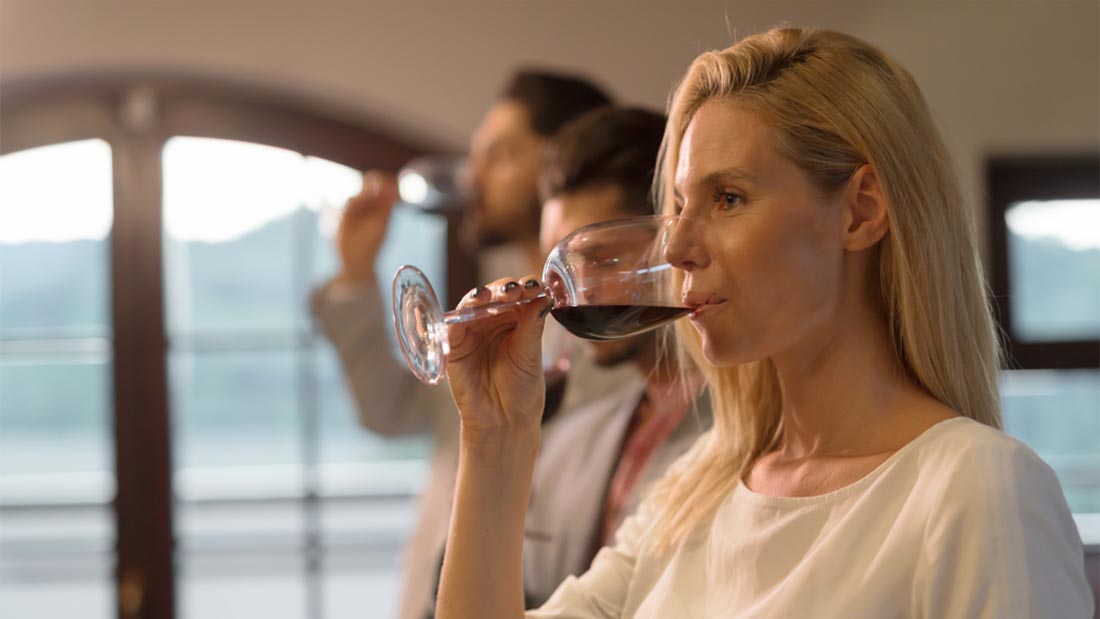
09 Apr Wine Tasting Tips For Novices
Many people are intimidated at the thought of attending winery tastings. They know that there would be connoisseurs present who would very casually talk about how the tannins in a particular wine are impressive or that they can taste leather in another and more.
But if you are still gaining your footing in the wine world, you might feel the need to know a thing or two about wine tasting and how it works , what the terms and expressions mean etc. Of course, enjoying a tasting experience isn’t always about having sound knowledge of these technicalities. Wine is what you make of it and each person will have different preferences. So if you are unsure about when and how to swirl, whiff and sip wines for the best wine tasting experience, read on for some wine tasting tips for novices….
If you are familiar with certain terminology and practices, your first wine drinking experience will be very enjoyable. You may have learnt from friends or discovered online how to savour wines, enjoy their unique flavours and textures. Today, we’ll take you through these steps to make it as easy as possible for you. The wine tasting process consists of three steps:
Looking At the Wine
Keep the wine glass in your hand and inspect the beverage for opacity, and viscosity (also called wine legs). The colour of the wine is determined by the variety. You should assume dark colours if it’s a red wine. That means it is in its infancy. With maturity, white wines turn yellow and orange. Try to do this against a white backdrop to see the colours more distinctly.
The strength of the colour is represented by opacity. An opaque wine will be one with a dark hue. It will be translucent with low colour strength. Wine legs are the droplets that grow within the bottle as you slowly twirl it. They’re clear on the rim.
The Smell Test
A swirl of the glass reveals aromas that can be classified as principal, secondary, or tertiary. Fruit, herbal, and spice tones dominate the primary aromas. Secondary aromas are produced during the fermentation phase. There are aromas of old malt and cheese rind. Malolactic fermentation can sometimes result in sour cream and yoghurt scents. Finally, tertiary aromas include vanilla, cedar, ground almonds, and traces of old tobacco. These appear when a wine has been aged in bottles or oak barrels.
Tasting
Take a sip of the wine and, rather than swallowing it right away, roll it around in your mouth. When you swallow the wine, try to exhale. It will enhance both your taste buds and your sense of smell. You could encounter a variety of flavours, including honey, salty, and bitter. The burning feeling in the back of your throat comes from alcohol. More heat indicates higher alcohol levels. Acidity refers to the fresh, tart and crisp components of wine; it is another essential component in wine tasting. Finally, tannins are responsible for the drying sensation. They can be found in grape skins and seeds and are derived from the aging process in oak barrels.
Texture
Your tongue is very sensitive and can “touch” the wine, perceiving its texture. The latter relates to various factors. However, more texture almost always occurs in riper and higher-alcohol wines. Ethanol gives wines textures because we perceive them as far “richer” than plain water. Our tongue can also detect tannins, which are the tongue depressor/ sand-paper drying sensation very common in red wines.
Duration
The taste of wines is also always time-based, there’s a beginning, mid-palate (middle), and the finish or end.
In addition to all these things, you also need to think. Determine whether the wine tasted balanced or seemed out of balance. The aspects to consider are the tannin, alcohol and acid content. Did any noticeable characteristics impress you?
Storing wines the right way is crucial to maintaining their flavours, textures and aromas. It’s where custom wine cellars come in. These features are temperature and humidity controlled and have perfect racking solutions based on your needs.
To find out how Signature Cellars can help you design and build a wine storage solution that can help protect your investment and add value to your home, call us on 1300 570 636, or email info@signaturecellars.com.au, and we will respond shortly.




No Comments